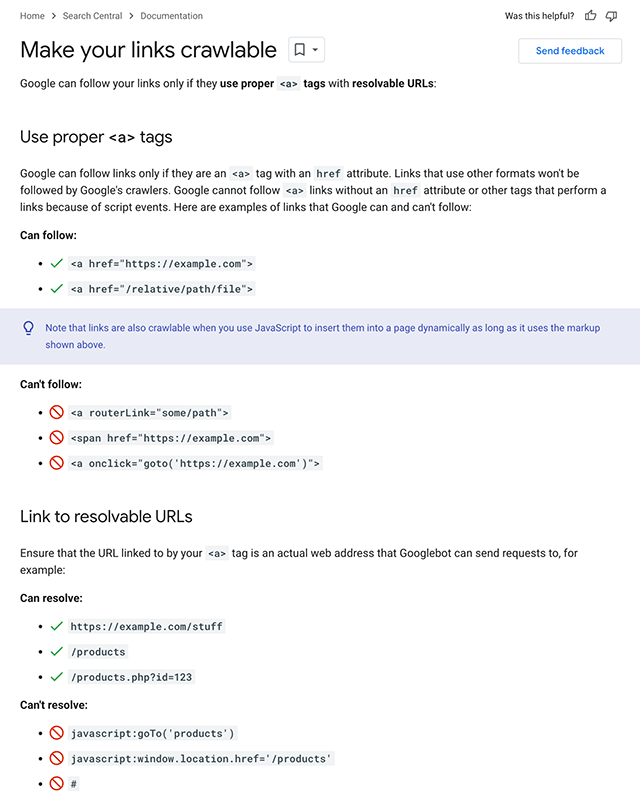SEO Link Best Practices: A Comprehensive Guide by Google
In the world of search engine optimization (SEO), link building has always been a vital aspect of a successful strategy. Backlinks, which are links from other websites to your own, have a significant impact on your website’s ranking in search engine results pages (SERPs). However, the process of link building can be complex and confusing, particularly for those who are new to SEO. That’s why Google has recently released an updated guide on SEO link best practices, covering a range of topics that can help website owners and marketers enhance their link building strategies.
The new document can be read here and you can compare it old document on the Wayback machine. Here are screenshots comparing the two.
Old document:

New document:

So as you can see, Google added:
Anchor Text Placements
One of the main areas covered in the new document is anchor text placements. Anchor text is the clickable text that appears as a hyperlink and helps search engines understand the context and relevance of the linked page. The guide provides valuable insights into where and how to use anchor text effectively. It suggests that anchor text should be used in a way that accurately reflects the content of the linked page, without being too generic or manipulative.
How to Write Good Anchor Text
Google’s new guide also includes tips on how to write good anchor text. The guide advises using descriptive anchor text that provides clear information about the linked page’s content. It suggests avoiding vague or generic phrases and steering clear of keyword stuffing, which can be seen as a manipulative practice by search engines.
Internal Links Within Your Content
Another area covered in the guide is the use of internal links within your content. Internal links are links that point to other pages within your website. The guide highlights the importance of internal linking in enhancing the user experience, helping visitors find relevant information, and allowing search engines to better understand the structure of your website. It suggests using descriptive anchor text for internal links and organizing your internal linking structure in a logical and intuitive manner.
External Links from Other Sites
Finally, the new guide provides insights into external links from other sites, which are links from other websites that point to your site. As we mentioned earlier, Google has indicated that external links will be less important as a ranking factor in the future. However, the guide still emphasizes the value of high-quality external links and suggests building relationships with other websites that have relevant content and a good reputation.
In conclusion, Google’s updated guide on SEO link best practices provides valuable insights into the complex world of link building. By following the tips and recommendations in the guide, website owners and marketers can improve their link building strategies and enhance their website’s visibility and ranking in search engine results pages.
